Contents
Why surfing is such a great skill to have for a backpacker?
Learn to Surf – Backpackers Guide to Surfing: You ask any proficient surfer out there and they will tell you that when you are riding a great wave and being out in the ocean is the ultimate sense of freedom. When you’re out surfing waves you have no worries in the world, all your problems and small minor issues and stresses in life seem irrelevant and so far away. All you are concentrating on is getting up on a great way and enjoying the exhilarating rush that comes with surfing.
Surfing is a fantastic form of fitness for cardiovascular and strength training and if you ever have a look at a surfer who spends a lot of time in the water surfing then you’ll see what an amazing physique they generally have. Being on a board catching waves will involve a lot of cardiovascular fitness to actually paddle hard to get out past the breaking waves and then to paddle onto a wave to ride it. There is a lot of constant paddling involved yet when you are out there on a surfboard your mind is diverted away from the physical fitness aspect and replaced with the mental awareness of the surf conditions and the drive to catch a good wave. The constant paddling motion involved with surfing sure strengthens the arm, shoulder, back, abdominal muscles and it is generally a great upper body work out.
In addition to being a great workout when you are out in the water surfing, it enables you to get a lot of sun which is a great source of vitamin D and well-known to improve the happiness of people. The salt water and surf also provides an invigorating type of feeling for the whole body.
However, when out in the sun it is very important to be conscious of getting sun burnt and developing skin cancers so it is crucial that you are sun smart and sun safe which means that you should use lots of sunblock or zinc cream on all of your exposed bodily areas. Wearing protective clothing such as a wetsuit, board shorts, t-shirt or rashie shirt can be a great way to protect major areas of your skin, however applying sunscreen to those uncovered areas is still a must. This is an extremely important safety issue that should be paramount to anything whenever you perform activities in the hot sun.
There are many fantastic benefits for surfing as it is a very healthy type of sport and it’s a type of activity that provides for a wonderful sense of freedom. But why is surfing so good and such an important skill to have for backpackers?
The short answer is simply that surfing is a universal type of activity which can be performed in any country or any region of the world that provides for a coastline with decent surfing waves. You don’t need to learn a language, you don’t need to learn a culture and you generally don’t need to learn any rules and laws in order to engage in the activity of surfing. Surfing is a social or competitive sport which is enjoyed by people all around.
Given the ultimate sense of freedom that you can get from surfing and being able to surf a great wave, this type of feeling is an activity that really resonates with the Backpacking culture that backpackers and adventure travelers are always striving for and seeking out.
But make no mistake about it being able to surf is not easy especially to begin with and then to become a really good surfer is an even harder task. Surfing is now considered a professional sport where there is huge competitive prize money involved and large lucrative sponsorship’s. You just have to look at the professional surfers who make a living out of surfing on the professional circuit to see exactly how skillful they really are and how hard surfing can be especially at the elite level. So if you’re wondering whether surfing is an easy activity to perform well the answer is that for a beginner it is quite a hard task to become a capable surfer and then for a good surfer it’s an even more difficult task to become an exceptionally great surfer or a professional surfer. For this very reason it’s why there are only a small number of surfers competing on the professional circuit in the world.
But to enjoy the freedom of surfing and the fitness that comes with it you don’t have to be a professional surfer and I am not here to talk to you about professional surfing what I’m here to do is to discuss with you what is so great about surfing especially for like minded backpackers and furthermore open up a discussion of how a beginner can learn how to start surfing.
As a backpacker or an adventure traveler if you can learn the skill of surfing then it will open your mind up to a whole range wonderful destinations throughout the world that you would consider travelling to which you may not have previously given much thought to. People who are really involved with surfing plan their whole world trips around surfing destinations, now I’m not saying this is something that you are going to do or are ready to do right now but the fact that people do this shows that the activity of surfing and travelling to wonderful places around the world really go hand-in-hand.
So if I haven’t convinced you yet as a backpacker or an adventure Traveler, or just someone who loves to get outdoors and experience life then I don’t think I’m going to with the rest of this blog series about getting involved and learning how to surf.
I myself grew up on the sunny Gold Coast in Queensland, Australia where I spent all my childhood and teenage days down at the beach and whilst I became very proficient in body boarding and body surfing I never actually mastered the art of stand-up surfboard riding. All of my close friends lived a little bit closer to the beach than I did so their accessibility to the surf was only around the corner was walking distance away however this is no excuse for not being able to stand up surf.
Currently, I have been living in Tamarama in Sydney which is just next to Bondi Beach and I am living only a stone’s throw away from the beach so I figured I really need to bite the bullet and learn once and for all the skill of stand-up surfboard riding.
What I intend to do is write a series of blog posts about surfing, about what’s needed to get started with surfing and most importantly step-by-step learning how to surf.
Obviously there are a few basics that you will need before you can get out in the surf including basic surf equipment.
But before you go out and buy a whole heap of equipment you should yourself into a relatively average level of fitness. Sure you will get a lot fitter from going out in the surf paddling but to begin with you want to have a certain level of fitness so that you don’t go out there and get completely wiped out without being able to get out past the breaker waves. You can do any sort of cardiovascular fitness to increase your fitness level which will be fine to get you started and then as you spend more time on your surfboard in the water your paddling muscles in your arms, shoulders and upper body will eventually become conditioned to surfing.
What equipment I need to get started?
Surfboard:
First things first you need to buy yourself a surfboard now you can do this by going along to a local surf shop and you can generally rent surfboards from some surf shops as well. Alternatively, you can buy a surfboard online however if you intend to buy one online you should do a lot of research to find out exactly what size and what type of surfboard you want to get because you generally won’t have the opportunity to pick the store sellers brain just like you would if you actually went into a physical bricks and mortar surfboard shop.
The other thing you can do is buy a second-hand surfboard which you can do exactly the same way from the same places as you would buy a brand-new surfboard or again if you know exactly what you’re looking for you can go onto eBay or another classified type of website to buy a surfboard.
There are many different types of surfboards that you can purchase the most common ones include foam surfboards, epoxy surfboards, and fibreglass surfboards.
You can and should certainly do your research however if you’re starting out and you’re a beginner surfer then I would recommend looking at getting a foam surfboard. The foam surfboards are safer than fibreglass and epoxy surfboards as they are made out of the same soft foam material that body boards or boogie boards are made out of so that means if you fall off and hit the board, when you’re learning which you will undoubtably do a number of times, then you will not be at as much risk of hurting yourself as if you were riding a harder surfboard.
Foam surfboards are also far more buoyant than fibreglass and epoxy surfboards and this is great for beginner surfers since they provide a far more stable type of surfboard when you want to stand up and surf on the wave.
I guess the only downside in getting a foam surfboard is the cost since they generally cost around the same amount as a fibreglass or an epoxy surfboard but this certainly shouldn’t deter you because the overall benefits of getting a foam surfboard for a beginner surfer sure outweigh this issue and at the end of the day you can always sell your foam surfboard secondhand as they tend to hold their value quite well as long as they are well looked after.
In relation to picking a specific size of surfboard for beginners is generally a better option to choose a larger size surfboard similar to a size of the Malibu surf board or a mini Malibu surfboard. A larger size surfboard generally has more flotation in the water, it also glides across the water quicker when someone is paddling on it which is definitely helpful for a beginner surfer in trying to get on to the wave.
I have decided to buy myself a Softlite foam surfboard which is 7’6″ in height and I am 6’2″ so the board is a lot taller than I am. You can see a picture of the surfboard that I purchased below I have called it the green machine. I got my Softlite foam surfboard from a really helpful guy called Luke at the Bondi Surf Co. Shop located at 80 Campbell Parade on Bondi Beach. If you are in Sydney or even Australia get onto these guys they really looked after us.
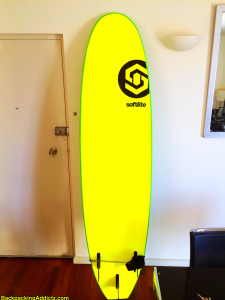
Now that you have got the main piece of equipment to begin surfing there are a few other little bits and bobs that you will definitely need to get in order to get out there and start surfing.
Leg Rope:
It is crucial that when you buy your surfboard you also buy a leg rope, this is a plastic piece of cord which has fair amount of flexibility to it which is attached to a plug in the back part of the surfboard and at the other end of the leg rope it will have a velcro strap that you can attach to one of your legs so that when you fall off the board your surfboard will not go floating away from you and will be 1 to 2 m away from you so that you can quickly grab the board, get back up and start paddling and surfing again.
Here is a picture of the leg rope attached to the surfboard, it is a critical piece of equipment required for surfing.
Surf Wax:
Another piece of important equipment that you’ll need to purchase is surfboard wax. Surfboard wax is cheap but very important since it enables you to apply a grip to the middle part of the surfboard area which you will be standing on when you get up to ride the wave. You can buy surfboard wax at any local surf store. Every time you go out to surf you should apply wax to the middle section of the surfboard, it can be applied by getting the wax and diagonally striking stripes through the middle section of the surfboard and then you should criss-cross those stripes in the opposite direction and once you have covered the middle section of the surfboard with the criss-cross or lattice type pattern you should then go over that middle section again in a circular type of motion. So that the entire middle section of your surfboard has enough grip for you to maintain a strong stable stance once you get up and start riding waves.
Here is a quick instructional video I put together to show you how to wax a surfboard:
Wetsuit/Rashie:
Depending on the climate and place in which you intend to surf in then you will need to either purchase a wetsuit for colder conditions or if the conditions are quite warm you can usually make do with boardshorts and a lycra rashie top or a t-shirt. If the conditions are warm then a t-shirt or a rashie is not crucial but I have found using a rashie to be good since it prevents board rash on the stomach and chest and it stops me sliding and moving about on the surfboard when I’m trying to paddle out past the wave breaking section of the beach. The added bonus of wearing a t-shirt or rashie or a wetsuit is that it will protect your skin from getting sunburnt.
Above is a picture of the Quicksilver rashie that I use when I go out surfing, its really lightweight and comfortable.
My learn how to surf step-by-step plan?
In order to teach myself how to surf I have put together a small and relatively simple plan which will make the task of learning to surf a lot easier for me. I want to be able to give myself the best chance of succeeding to master this difficult sport and the following steps are going to help me through the process:
- Mentally prepare myself for a lot of practice and a lot of failure before I am able to come a competent surfer. I will discuss the issue of consistency and overcoming failure in detail further in this blog post.
- Obtain all the necessary equipment and material to begin surfing.
- Watch a number of learn how to surf Youtube video clips and also go down to the beach and watch other surfers to see exactly what they do out there in the surf. If possible watch other beginner surfers being taught in a surf school.
- Choose the right Surf conditions to go out and begin my practising in. I will begin practising in surf conditions which are smaller waves and waves which crumble when they begin to break as opposed to dumping waves.
- Get down to the beach as often as possible to practice as much as possible. I need to commit myself to consistency of practice and this involves getting out in the surf as much as possible. My plan is to develop a daily habit or ritual, if you will, which involves me getting straight out of bed and going down for a surf before I start the day. This will act as a good fitness workout to kick the rest of the day off.
Consistency, Practice & Beating the Initial Frustration
Surfing is quite a technical sport and it’s an activity which requires a lot of practice, balance and skill to become quite competent as a surfer. I know that it is going to take a lot of practice and a lot of effort for me to become a good surfer and to be able to ride waves just like I see others out there in the surf doing.
From what I can gather a lot of practice and a lot of consistency is key to becoming a good surfer. However, to begin with there is going to be a lot of difficulty in getting up on my board and surfing waves, there are going to be a lot of failures in getting where I want to be straightaway and it’s going to be a slow process to becoming a competant surfer. So in order to overcome this frustrating process of continued failures I have worked out that I need to somewhat deconstruct the activity of surfing so that I can achieve a number of mini wind or accomplishments along the way.
I have decided to take the “Tim Ferriss” approach of deconstructing an activity or skill to make the learning process a whole lot easier. This principle is also known as the 80/20 principle. The fact remains that a lot of practice and consistency will be involved in the learning process but there are a number of things that can be done to make a lot of the learning easier and to fast track the process.
Straightaway I’m going to get out in the surf and do my best to paddle out pass the breaking waves. For me I am relatively fit so this shouldn’t be too much of a difficult task especially since I grew up doing a lot of bodyboarding. However, I think the more I get out there the more and more conditioned my muscles will get to the paddling.
Instead of trying to surf big waves my intention is to try catching small waves and jump up on my board once the wave has already broken. I first want to get used to getting up on my surfboard and being able to maintain a stable balance on the surfboard.
Have a quick look at the video that I took below, this was taken at Tamarama Beach in Sydney of a bunch of beginners in a surf school. These are the types of waves which are perfect for learning to surf on as they are smaller and gently crumble when they break, they are also far less intimidating that the larger waves that dump when they break.
I have been watching beginner surfers down at the beach who are being taught in a surf school and one thing I have noticed is that when they try to get up on a wave they need to hold the board with both hands in front of their body and then in one quick motion immediately jump to their feet while still holding the board and then proceed to stand up and let go of the board. The beginners tend to fall off straight away but the more and more they practice I have noticed that they become more confident and stable standing up on the surfboard.
So in relation to setting a number of mini goals and wins along the way to keep my motivation during the learning process strong my plan is to work at the following accomplishments:
- First, I want to be able to feel comfortable on my board and be able to easily paddle out past the breaking waves. This will involve performing the exercise of duck diving in order to dive under a wave in order to get out past the breaking wave section of the surf.
- Second, I want to be able to stand up on my surfboard regardless of whether I stay up for long or fall off straightaway.
- Third, I want to be able to stand up on my board and stay standing up for as long as possible.
- Fourth, I want to be able to stand up on my board and surf the wave and this will involve actually manouvering my board so that I can turn and ride side on as the wave move’s along.
- Finally, I want to be able to consolidate the last step by becoming more confident in standing up and surfing the wave and begin riding waves which are a little bigger than the small crumbling waves that I have started learning on.
At this stage just starting out I’m not sure how long or how much practice it is going to take for me to accomplish each step throughout the process but my plan is to trying get down to the beach and practice for at least an hour approximately four times a week.
My surfing progress
I’m writing this blog post to begin with and to outline how to take the first steps in learning how to surf. I have only just got all my equipment and started going down to the beach and practising. As time goes on and I begin the practising process new tips and tricks may become apparent and I will make these known through this blog as time goes on.
I have been out in the surf on my surfboard about five or six times I am now feeling confident about paddling on my surfboard and getting out past the waves which are breaking. I have only been going out in smaller surf where the waves are crumbling and usually the waves are about 1 to 3 foot in size.
I must say that when you are standing on the beach looking at the surf often the waves look quite small and non-threatening. However, when you get out into the surf and your laying on the surfboard at the bottom of the wave then often the waves can appear the opposite – large and very threatening. But what I have come to learn from some spectacular wipeouts is that it is important to overcome the fear of hurting yourself when paddling onto a wave. When at the top of a wave, all of a sudden the wave can move you forward very quickly and you faced with getting on your surfboard and dropping down the wave. When you are learning this is one of the scariest things about surfing. But what you must know is that with a foam surfboard and on small waves it is generally quite hard to hurt yourself. Sure you may get wiped out and tumbled in the whitewash but the more this happens to you the more confident you will get in dropping in on a wave. This is one of the biggest obstacles to overcome.
With the smaller waves I haven’t had too much trouble in paddling pass them however I have found that duck diving on a very buoyant foam surfboard takes a lot of effort and strength. But when a large wave comes through I have had to push my board away and just dive under the wave and then regather my board. As I get used to duck diving I am sure I will get better at this however.
One thing that I have noticed is that just before you get up onto the wave you really need to paddle as hard as you can because a lot of the time I have noticed that I will paddle and the wave just passes me by and I can’t get on top of the wave. On some occasions once the waves are already broken and the white wash is coming towards me I’m able to get a boost along whilst laying on my surfboard and at this point I have been able to stand up on the surfboard but I’m still finding my balance and tend to fall off pretty quickly.
However, I guess I could call it a mini accomplishment so far that I have been able to feel confident on my surfboard, get out past the breakers, attempt to stand up on my surfboard and I’ve even been able to stay up on my surfboard for a short period of time. So far the longest that I have been able to stay up on my surfboard is for about 5 – 10 seconds and the feeling was quite exhilarating despite the fact it was just a small crumbling wave I felt the rush of standing up on my surfboard and getting pushed along by the wave.
I certainly feel like it’s these smaller crumbling waves or wave which are already broken which I am able to get up on that is really driving me to get more of them and to become a better surfer. Each time I get out there in the surf I’m feeling more and more confident about actually standing up on the surfboard and riding the waves.
What I intend to do is continue practising and continue getting down to the beach as much as possible. After another couple of weeks I intend to write another blog post of how my surfing skills and ability is progressing.
So fingers crossed and please look out for my updated blog post of how my so skills are progressing.
***
Learn to Surf – Backpackers Guide to Surfing by Josh Boorman
If you enjoyed this blog post on Learn to Surf: Backpackers Guide to Surfing and have any tips or pointers for me in my venture to become a better surfer and learn how to surf then I would really appreciate you to leave some comments below.
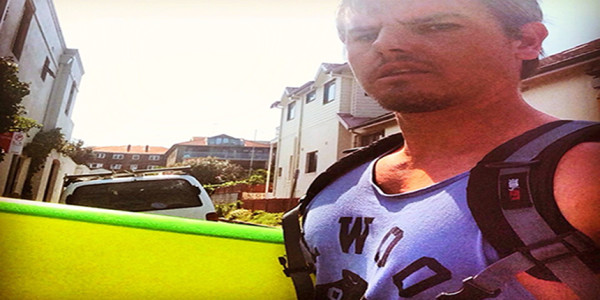


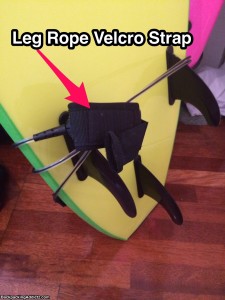
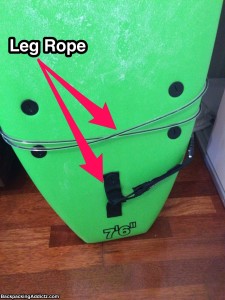
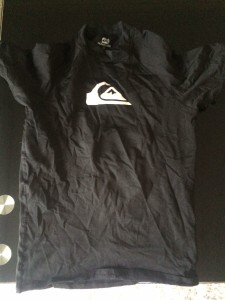

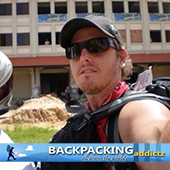

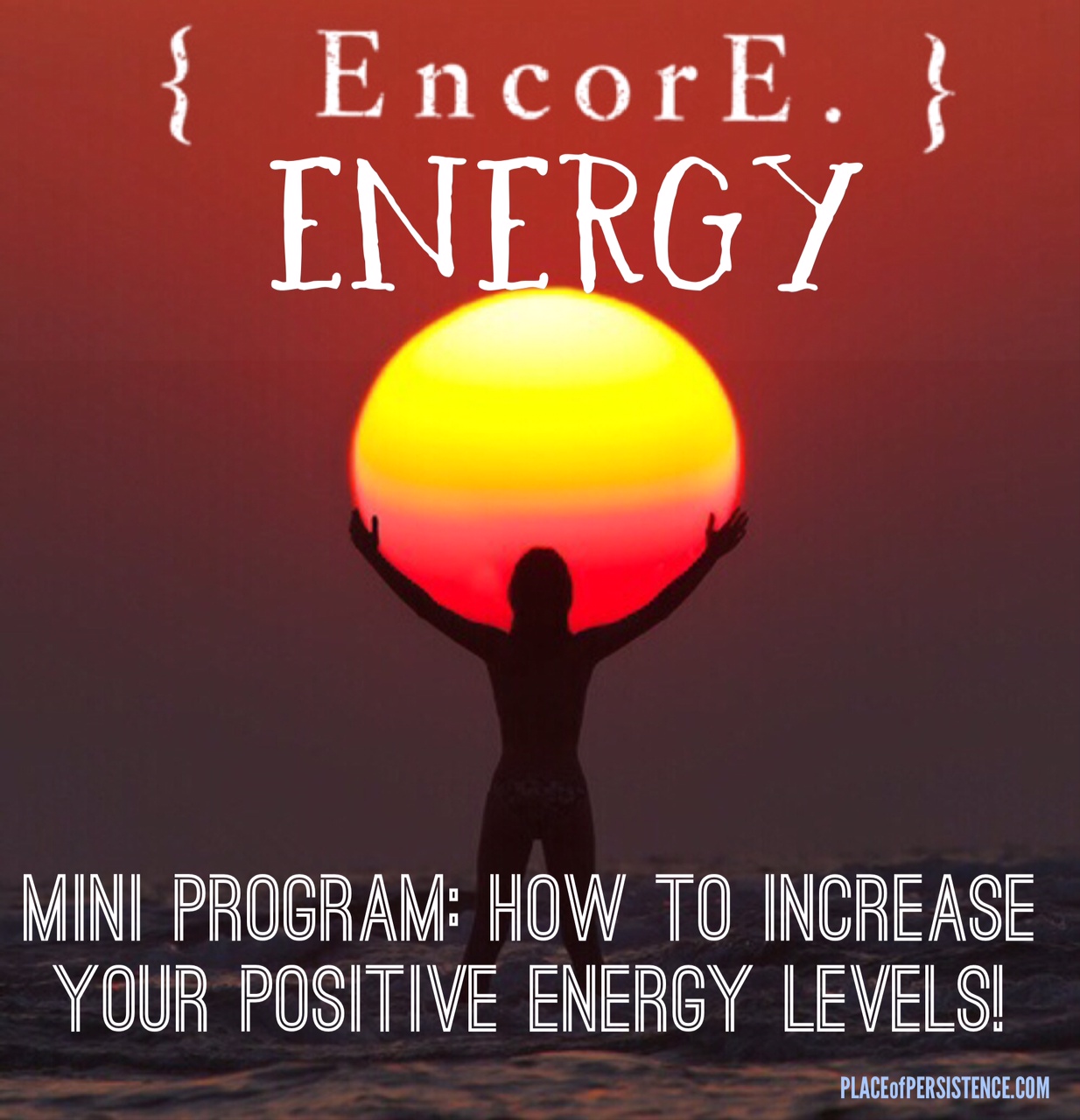
3 Comments
Drew | The Hungry Partier
May 28, 2014This is great man!! I learned how to Surf in Sri Lanka a few months ago, and it was a great experience. I actually roed a wave after (many) hours!
Let me know if you make it out here to Korea anytime soon 🙂
Clay
July 11, 2014This is a killer guide! I’ll definitely have to refer back to this before I go. Hopefully soon!
Lombok Wander
July 18, 2019Try to Surf at Sumbawa, Lakey Beach !
Leave A Response